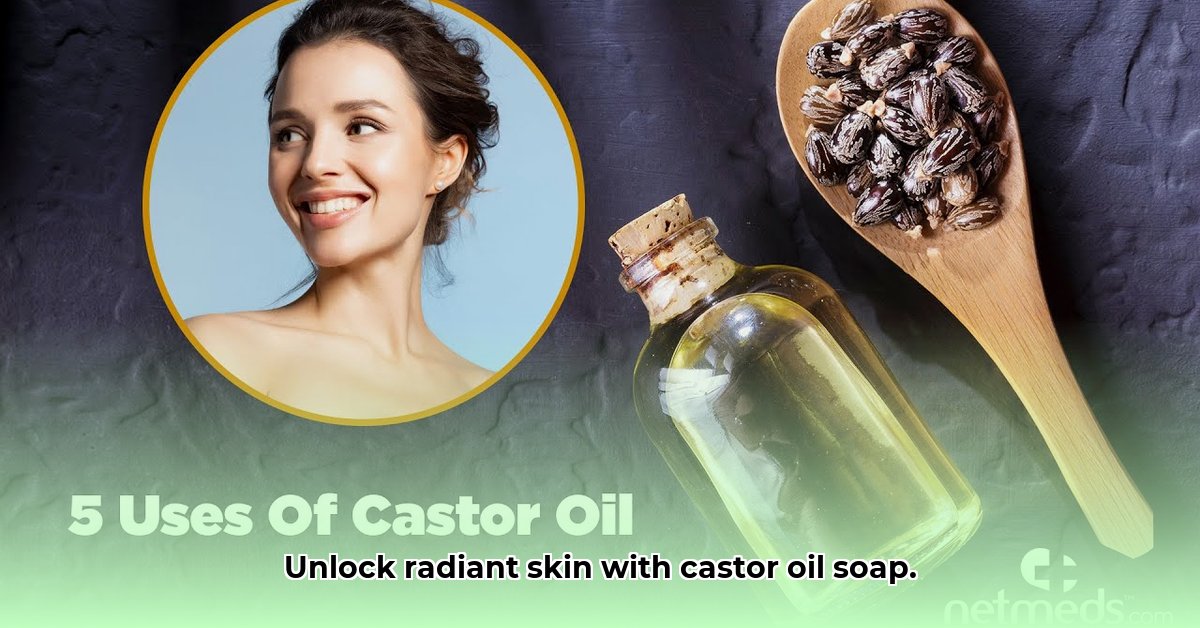
Thinking about trying castor oil soap? This comprehensive guide explores its potential benefits, usage instructions, and considerations for safe and effective use. We'll examine the scientific evidence, address common misconceptions, and help you determine if castor oil soap is right for you.
Benefits of Castor Oil Soap
Castor oil soap's rising popularity stems from its unique blend of cleansing and moisturizing properties. The key ingredient is ricinoleic acid, a fatty acid found in castor oil. This acid is a humectant, meaning it attracts and retains moisture from the air, keeping skin hydrated and soft. This moisturizing effect is a primary benefit, making it a suitable cleanser even for drier skin types.
Many users report additional benefits, such as soothing irritated skin and potentially aiding in conditions like acne and eczema. Ricinoleic acid's anti-inflammatory and antimicrobial properties are believed to contribute to these effects. However, it's crucial to note that rigorous scientific evidence supporting these claims is limited. While anecdotal evidence abounds, more research is needed to confirm these benefits definitively. The concentration of ricinoleic acid in castor oil soap also varies, influencing its efficacy.
How to Use Castor Oil Soap
Using castor oil soap is simple:
- Wet your skin: Start with lukewarm water to open pores.
- Lather: Gently work a small amount of soap between your hands to create a lather.
- Massage: Apply the lather to your skin with gentle circular motions, avoiding harsh scrubbing.
- Rinse thoroughly: Remove all soap residue with lukewarm water.
- Pat dry: Gently pat your skin dry with a soft towel.
For sensitive skin, a patch test is crucial. Apply a small amount to a hidden area (like your inner arm) and wait 24 hours. If irritation occurs, discontinue use.
Potential Drawbacks and Considerations
While generally safe, castor oil soap isn't without potential drawbacks:
- Allergic reactions: Though rare, allergic reactions are possible. Patch testing is essential before full application.
- Variable ricinoleic acid content: The concentration of ricinoleic acid varies between brands and homemade soaps, impacting moisturizing and therapeutic effects.
- Inconsistent product quality: The quality and purity of ingredients can differ significantly across brands. Look for brands that provide transparent information about their sourcing and manufacturing.
Choosing a Castor Oil Soap
Selecting a high-quality castor oil soap involves considering several factors:
- Ricinoleic acid concentration: Opt for soaps with a higher percentage of ricinoleic acid for maximum moisturizing benefits. Check the product label for this information.
- Ingredient list: Prioritize soaps with natural ingredients, avoiding harsh chemicals, artificial fragrances, and dyes.
- Ethical sourcing: Support brands committed to ethical and sustainable sourcing practices.
- Skin type: Consider your skin type when choosing. Dry skin may benefit from soaps with added butters or oils, while oily or acne-prone skin may prefer a less creamy formulation. Homemade vs. commercially produced soaps both have pros and cons regarding ingredient control and consistency.
Conclusion: A Personalized Approach
Castor oil soap offers potential benefits, primarily its moisturizing and cleansing properties. However, individual responses vary. Always start with a patch test and observe your skin's reaction. Discontinue use if irritation occurs. While further research is needed to fully substantiate claims regarding specific skin conditions, a cautious and personalized approach is crucial for maximizing the benefits of castor oil soap. Remember, your skin's health is paramount.